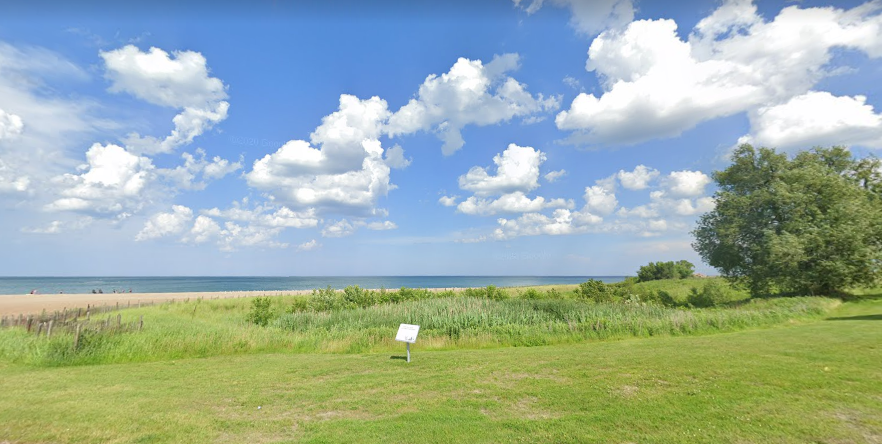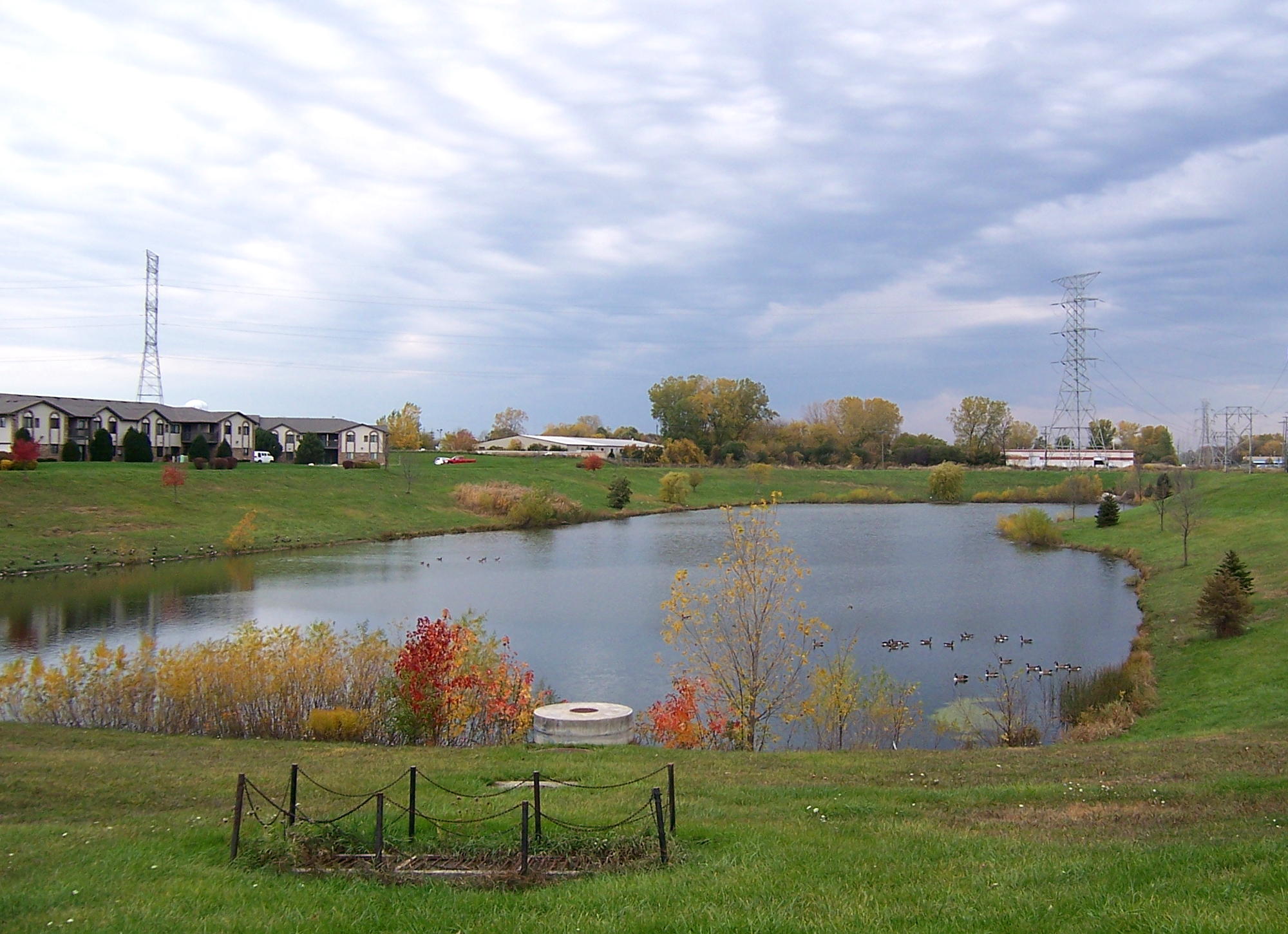What is ‘stormwater’ or ‘stormwater runoff’?
Stormwater is surface water that originates during precipitation events and from snow/ice melt. Stormwater runoff is water from rain or melting ice/snow that cannot be readily absorbed by ground surfaces and therefore "runs off" across the land.
What is ‘stormwater pollution’ and what causes it?
When stormwater runs off grassy areas or hard surfaces, such as rooftops, sidewalks, and driveways, it collects pollutants. The stormwater runoff may be polluted with soil particles, oil, pesticides, litter, fertilizer, pet waste, bacteria, auto fluids and other material. This stormwater runoff travels into the City storm sewer system and is discharged into our lakes and nearby waterways without being treated. Stormwater pollution is measured by the water quality of these valuable resources.
What are the problems with stormwater runoff and pollution?
Stormwater runoff can lead to erosion, especially of our riverbanks, and the flooding of our streets. Stormwater pollution can make our local waters unsafe for fishing, swimming, and boating, as well as damaging their natural ecosystems. These problems are magnified in urban areas, like the City of Kenosha, because we have dramatically altered the landscape by building houses, roads, parking lots and other buildings. These structures have replaced open areas that formerly absorbed water with hard, impervious surfaces that increase stormwater runoff.
What is an impervious (non-porous) surface?
An impervious (non-porous) surface is a hard surface that releases, as runoff, all or a large portion of the precipitation that falls on it. Some examples are rooftops, sidewalks, driveways, parking lots, and streets, including those comprised of compacted stone or gravel.
How does the Stormwater Utility help decrease stormwater pollution and flooding?
The Kenosha Stormwater Utility will:
-Manage the stormwater to eliminate localized flooding by constructing and maintaining the City‘s extensive storm sewer system
-Construct, maintain and monitor stormwater management facilities to reduce the amount of pollutants entering our local waterways
-Enforce tighter regulations to improve water quality and water quality controls
-Spread awareness about how the changes we make to our properties have an impact on stormwater runoff
-Educate ourselves on ways that we can reduce stormwater pollution and stormwater runoff, understanding that our actions have impacts on water quality
-Protect one of our most valuable resources – our waterways
What is a stormwater conveyance system?
A stormwater conveyance system is a system that collects stormwater and drains it into our local waterways. In Kenosha this system consists of curb and gutter, catch basins, culverts, storm sewers, ditches and sometimes detention basins. Runoff from your property is collected in one or many of these components of the system and carried off to a nearby waterway.
Is stormwater treated at a treatment plant?
No, stormwater from your property is not treated like the water that you use inside your home. Stormwater is directly discharged into our local waterways through a series of pipe systems.
What is a detention basin?
In some areas of the City the stormwater conveyance system may discharge to a detention basin before it enters our local waterways. These detention basins are man-made basins that store water so that it can be released at a controlled rate into the downstream system. These basins help prevent flooding and control runoff, so the waterways do not receive high volumes of water in a short amount of time.
Some detention basins are classified by the City as 'wet basins,' which serve additional functions. Wet basins are depressions that hold some amount of water year-round. This wet area of the detention basin helps clean the stormwater by filtering or screening out contaminants, such as soil particles, before the stormwater is released into waterways under the controlled condition.
Detention basin in the City of Kenosha
What is an infiltration basin?
When stormwater enters the sewer it can carry lots of pollutants that can contaminate our drinking water in Lake Michigan. An infiltration basin is a stormwater treatment facility that uses geographically low areas to filter and infiltrate water from storms. Native plants catch garbage, remove heavy metal pollutants, and provide important native habitats for wildlife.
In 2022, the Stormwater Utility worked with the Kenosha Museums, Root Pike WIN and Harborside Academy to remove invasive species and to restore the native plants. Click here for more information about our Pennoyer Infiltration Basin Planting Project.

Infiltration basin in the City of Kenosha
When did the Kenosha Stormwater Utility begin?
On November 6, 2006 the Kenosha Common Council adopted Ordinance No. 51-08 which created Chapter VIII (8) of the Code of General Ordinances, entitled "Stormwater Utility," which created a new utility fee to fund stormwater management in the City.
Why do we need a Stormwater Utility fee?
The Stormwater Utility fee raises the revenue needed to fund the stormwater management program. This program brings the City of Kenosha into compliance with federal regulations and safeguards our community through improved drainage and the protection of local waters. The following are a few examples of what the fee goes to fund:
-Constructing new storm sewer projects
-Storm drain cleaning and repair
-Street sweeping
-Shoulder and ditch maintenance within the right-of-way
-Public education and outreach
-Inspection and enforcement of construction site erosion control standards
-Cleaning dirt and debris from pipes, inlets and catch basins
Is Kenosha the only community charging a Stormwater Utility fee?
No. Many communities throughout the United States utilize a Stormwater Utility fee. Some of the communities in close proximity to Kenosha who have adopted a Stormwater Utility fee are: Pleasant Prairie, Salem, Racine, Mount Pleasant, Cudahy, Janesville, Madison, West Allis, Wauwatosa, and New Berlin.
Who pays a Stormwater Utility fee?
All property owners of developed and undeveloped property within the City of Kenosha pay a stormwater utility fee. This includes residential homeowners, churches, schools, non-profit organizations and commercial properties.
How do you determine my Stormwater Utility fee?
The fee is comprised of two parts: a base charge + variable charge. The variable charge is the EHU fee per month as adopted by the rate resolution.
What is an EHU and how is it calculated?
EHU stands for Equivalent Hydraulic Unit and is a unit of measure for stormwater runoff. An EHU represents the average cost of the services necessary to manage stormwater from a typical single-family home. EHUs are calculated by determining the estimated peak runoff rate from a property. This is done by determining the parcel size of the property, and comparing that to the amount of impervious area on the parcel.
Who do I contact if I have more questions related to the Stormwater Utility?
If you would like additional information about the Kenosha Stormwater Utility, please call 262-653-4050.
